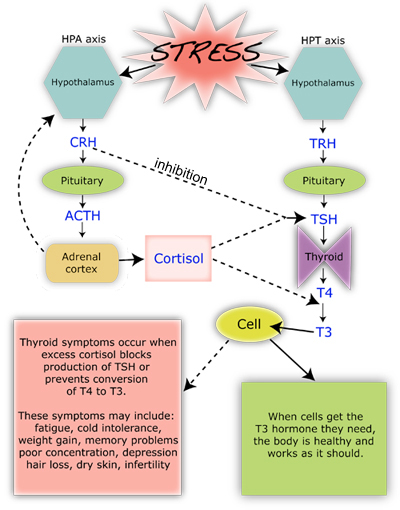Ask yourself the following questions:
- Does your job limit interaction with people and/or do you spend most of your time with a computer screen?
- Have you become cynical or critical at work?
- Do you drag yourself to work and have trouble getting started once you arrive?
- Have you become irritable or impatient with co-workers, customers or clients?
- Do you lack the energy to be consistently productive?
- Do you lack satisfaction from your achievements?
- Do you feel disillusioned about your job?
- Are you using food, drugs or alcohol to feel better or to simply not feel?
- Have your sleep habits or appetite changed?
- Are you troubled by unexplained headaches, backaches or other physical complaints?
 These are the ten most common signs of “burnout.” 46% of respondents in surveys indicate at least one of the above symptoms of burnout. Two or more of these imply that you are suffering from some degree of “burnout.” The classic triad of burnout is:
These are the ten most common signs of “burnout.” 46% of respondents in surveys indicate at least one of the above symptoms of burnout. Two or more of these imply that you are suffering from some degree of “burnout.” The classic triad of burnout is:
- Exhaustion
- Cynicism
- Questioning the quality of your work, or questioning whether you are making a difference in the world any longer
What is burnout? It is defined by “Mr. Webster” as “physical or mental collapse caused by overwork or stress.” But, that definition doesn’t seem to do it justice, and many people experiencing burnout don’t actually “collapse.” They do, however, become significantly less productive, depressed, and loose the enjoyment of life. Work begins to feel like slavery, exercise becomes a chore, food begins to have associations with guilt, friendships are seen as obligations and love looses its luster and looks more like a social construct.
Burnout is often likened to discontent, however, these are two very different emotional feelings. Discontent can be defined as dissatisfaction with ones circumstances. There are two kinds of discontent in this world: the discontent that works and the discontent that wrings its hands. The first kind often gets what it wants and the second looses what it has.
Burnout differs from discontent, in that continued work toward a goal brings on the triad of emotional exhaustion, depersonalization and the feeling of reduced personal accomplishment. Burnout is, in reality, the sum total of hundreds of thousands of tiny betrayals of purpose.
Burnout can occur in any field of work, however, a study published in the 2012 issue of JAMA reveals that over 40% of the ~800,000 U.S. physicians are experiencing burnout and are more prone to burnout than any other worker in the United States. The journal Academic Medicine recently reported that medical students, when compared to age-matched fellow college graduates, reported significantly higher rates of burnout.
So, how do you overcome burnout?
I’m an Osteopath. I see disease in the context and inter-relationship of the mind, body & spirit. Overcoming burnout requires one to restore balance in these three areas. I am impressed by the work of Charlie Hoehn in his book, Play it away: A workaholic’s cure for anxiety. Charlie does a wonderful job of describing the broken inter-relationship of the mind, body and spirit in a person experiencing burnout.
The first step to repairing the broken inter-relationship is to recognize and remove those anchors keeping you tethered to the feelings of burnout. The anchors are the stressors that cause you to worry on a daily and weekly basis. Journaling these stressors, writing them down in 3-5 word sentences is the start. Identify which of these stressors is the biggest or causes the most angst, then write out the following question. “How can I eliminate [stressor] from my life? Do this with the largest two or three stressors. Then write out a solution that is small and uncomplicated to each stressor. Put the solution to work immediately. If your solution has not improved your feelings of stress and anxiety within a week, then drop the first and try to find a second stressor, or otherwise switch to a second solution. Journaling these thoughts, questions, feelings and answers allows your mind to change from a self-centered focus to an action based focus. It clears the mind to move into action. Nothing is more important in reducing burnout, than nourishing the imagination. Using a journal helps stimulate thought and the imagination.
The second technique is scheduling some real play. Write down the five most fun activity involved with play that you did as a child. Then, set aside dedicated time for your favorite activity of play. It is essential that you actually schedule this play time into your daily activities. There are a couple of rules associated with play time.
- Disconnect from all social media
- Harmony of the playtime is more important than winning
- Have some serious fun
- Shoot for 30 minutes of play time per day
- This should ideally be done outside in the fresh air and sunlight
“A lack of play should be treated like malnutrition: it’s a health risk to your body and your mind.” (Stuart Brown)
“Play is the highest form of research.” (Albert Einstein)
Technique number three is related to sleep. It is essential that you have a consistent bedtime and give yourself the opportunity to take an afternoon nap. You can optimize your sleep by turning off electronics before getting into bed, going to bed at the same time each night, decreasing the room temperature to 68-70 degrees Fahrenheit, draw the curtains to make the room dark, and use a relaxing loop of quite background sound like ocean waves, or the sound of a trickling stream to ease your mind (can be found on a number of apps).
It may take up to a week for your body to unwind and get used to this schedule. Also, schedule a 20 minute afternoon nap.
Meditation and/or prayer is the fourth technique. Sit or kneel, close your eyes and observe the thoughts that enter your mind for 10-15 minutes. Listen to and keep your breathing calm and deep. Pay attention to the rhythm of your breathing. Reading can also be a form of meditation and has become an important refreshing part of alleviating burnout. We can only be as good as the books that we read. Read, ponder over and talk about good books.
Fifth, eat healthy meals with healthy friends. Decrease the carbohydrates and increase the good omega 3 fats in your diet. The insulin response to carbohydrates stimulates the inflammatory and parasympathetic nervous system making you more fatigued and tired. Reduce the bread, rice, pasta, potatoes, carrots and corn intake in your diet.
Increasing the good fat in your diet (like Kerrygold Irish Butter, Coconut Oil, Olive Oil, and real animal fats) actually increases your bodies access to essential B vitamins and improves the use of Vitamin D. Making dietary changes become a habit is often easier when it is done with a friend. Schedule opportunities to eat healthy meals with family or friends attempting to do the same thing. You will help support each other and be more likely to succeed.
The last recommendation is spend time in nature. One weekend a month spend at least two hours out in nature. Take a hike, go on a nature walk, go camping, swim in the river, etc. Give yourself permission to unplug during these times. Then, pay close attention to how you feel when your in different environments.
In the words of Shakespeare, “Self-love, my liege, is not so vile a sin/As self-neglecting” (King Henry V, Act 2, scene 4).
I conclude with the rhetorical question, “If you work for a living, why do you kill yourself working?” (The Good, The Bad, and the Ugly)

 People with significant stressors in their life have been show to have a raised cortisol secretion. Chronic stress induces hyperactivity of the hypothalamic-pituitary-adrenal axis causing an over production of cortisol and normalization of their cortisol levels occurs after resolution of the stressor. This cortisol response is not high enough to lead to a true
People with significant stressors in their life have been show to have a raised cortisol secretion. Chronic stress induces hyperactivity of the hypothalamic-pituitary-adrenal axis causing an over production of cortisol and normalization of their cortisol levels occurs after resolution of the stressor. This cortisol response is not high enough to lead to a true  Under a stress response, cortisol turns on gluconeogensis in the liver (the conversion of amino acids into glucose) for fuel. Cortisol, also, shifts the storage of fats into the deeper abdominal tissues and turns on the maturation process of adipocytes (fat cells). In the process, it suppresses the immune system to decrease inflammation during times of stress (7,8,9). In the short run, this is an important process, however, when cortisol production is chronically turned up, it leads to abnormal deposition of fat, increased risk of infection, impotence, abnormal blood sugars, head
Under a stress response, cortisol turns on gluconeogensis in the liver (the conversion of amino acids into glucose) for fuel. Cortisol, also, shifts the storage of fats into the deeper abdominal tissues and turns on the maturation process of adipocytes (fat cells). In the process, it suppresses the immune system to decrease inflammation during times of stress (7,8,9). In the short run, this is an important process, however, when cortisol production is chronically turned up, it leads to abnormal deposition of fat, increased risk of infection, impotence, abnormal blood sugars, head









 And, record your water intake. I am amazed at how many of my patient’s are dehydrated and just putting water back into their systems help them loose weight.
And, record your water intake. I am amazed at how many of my patient’s are dehydrated and just putting water back into their systems help them loose weight.


 The FDA approved an intense new artificial sweetener, Advantame. Because of its chemical similarity, Aspartame now has a super sweet cousin. This sweetener, 20,000-37,000 times more sweet than table sugar (sucrose), is found in powder form and dissolves in water. However, it does partially break down when exposed to heat or used in heated drinks, so it may not be that great for cooking.
The FDA approved an intense new artificial sweetener, Advantame. Because of its chemical similarity, Aspartame now has a super sweet cousin. This sweetener, 20,000-37,000 times more sweet than table sugar (sucrose), is found in powder form and dissolves in water. However, it does partially break down when exposed to heat or used in heated drinks, so it may not be that great for cooking.